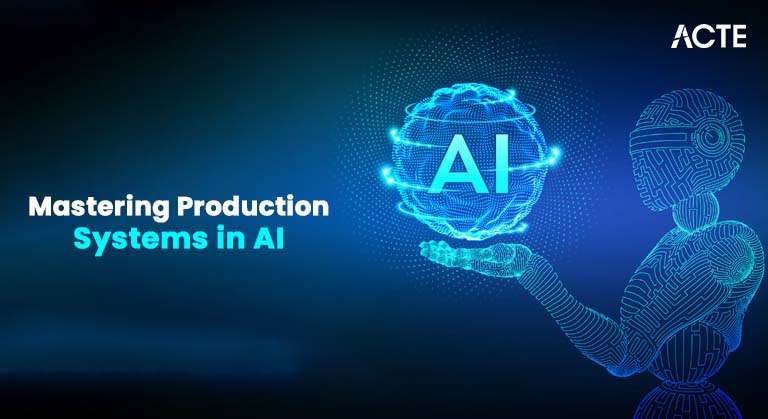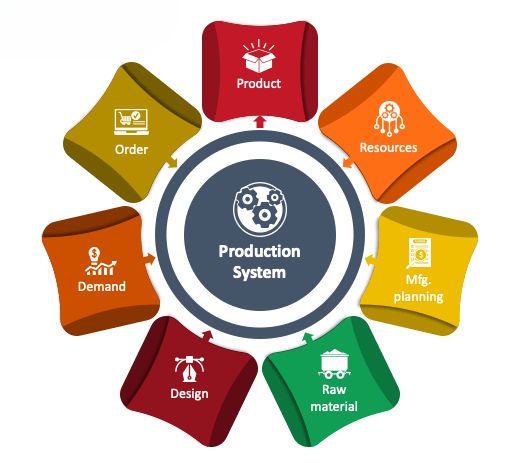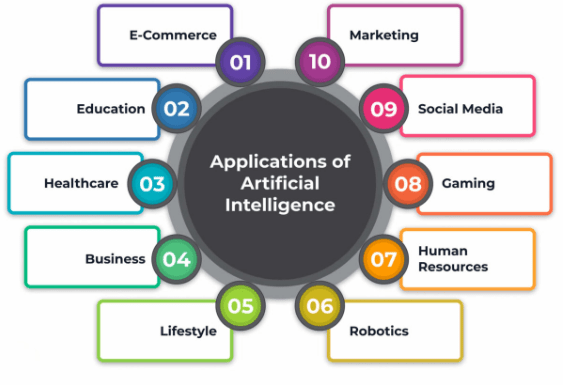
- Introduction to Production Systems in AI
- Components of a Production System
- How Production Systems Work in AI
- Types of Production Systems
- Rule-Based Systems and Expert Systems
- Applications of AI Production Systems
- Challenges in Implementing AI Production Systems
- Role of Machine Learning in AI Production Systems
- AI Production System vs. Traditional Computing
- Future Trends in AI Production Systems
- Career Opportunities in AI-Based Systems
Introduction to Production Systems in AI
A production system in the context of artificial intelligence (AI) refers to a framework for solving problems and making decisions based on rules or conditions. These systems are designed to handle complex decision-making tasks, making them vital for AI applications in robotics, expert systems, natural language processing (NLP), and more. Production systems work by applying predefined rules (also known as production rules) to manipulate data or derive conclusions based on available information. These systems can be seen as a foundational structure for AI’s knowledge representation, particularly in rule-based systems, which focus on how data is processed through a series of conditional statements. The ability to model decision-making with a structured rule set has made production systems essential for developing intelligent systems in various domains. Understanding the inner workings of production systems in Artificial Intelligence can significantly impact the development of more efficient and accurate AI-driven applications.
Components of a Production System
A typical production system in AI consists of several key components that enable it to process data and produce decisions or actions based on predefined rules. These components include:
- Knowledge Base: The knowledge base is a central repository of facts and rules. It contains information about the environment, problem domain, or task the system is designed to address. These facts are typically represented in rule-based systems as statements or propositions (e.g., “It is raining”).
- Rule Base (Production Rules): A set of rules defining the system’s decision-making logic. These rules usually take the form of “If-Then” statements. For example, “If it is raining, carry an umbrella.” The rules are the driving force behind the system’s ability to make decisions.
- Inference Engine: The inference engine processes the rules and facts stored in the knowledge base. It applies the rules to the facts, drawing inferences or conclusions based on the conditions set by the regulations. The engine is the decision-making mechanism of the production system.
- Working Memory: This component holds the current state of facts and intermediate data generated during the system’s execution. It is updated as the inference engine applies rules, storing both new and modified facts.
- Control Strategy: This component determines the order in which rules are applied. Some systems may use forward chaining (applying rules as soon as their conditions are satisfied) or backward chaining (working backward from the goal to determine necessary facts).
- Execution Mechanism: After the inference engine derives a conclusion, this component is responsible for carrying out actions based on the decision-making process’s results, such as sending commands to external devices or producing output to users.
- Initialization: The production system is initialized with facts (initial conditions) in the working memory.
- Rule Application: The inference engine evaluates the rules and checks whether their conditions (the “If” part of the rule) are satisfied based on the current facts in working memory. If the condition is met, the “Then” part of the rule (the action or conclusion) is executed.
- Updating Working Memory: The execution of rules typically adds new facts to the working memory or updates existing facts.
- Termination: The process continues until a solution is found, a goal is achieved, or no more applicable rules are left. Depending on the problem being solved, the system can then stop or reach an intermediate state.
- Expert Systems: Used in fields such as healthcare (medical diagnosis), finance (fraud detection), and law (legal advice).
- Recommendation Systems: Production systems can help recommend products, services, or content based on user preferences or behavior.
- Automated Planning: AI production systems are used in planning tasks, such as scheduling or logistics management, by applying rules to optimize processes.
- Natural Language Processing (NLP): Production systems can be applied to functions such as text classification, machine translation, and information retrieval in Natural Language Processing systems.
- Robotics: In robotics, production systems guide decision-making for autonomous robots, such as self-driving cars or manufacturing robots.
- Complexity of Rule Definition: Defining a comprehensive and accurate set of rules for complex domains can be time-consuming and error-prone.
- Scalability: As the knowledge base grows, managing and maintaining rules becomes more complex, particularly in large-scale systems.
- Lack of Flexibility: Rule-based systems can struggle to adapt to new, unseen situations that were not anticipated during rule development.
- Performance Issues: In real-time systems, applying multiple rules can lead to performance bottlenecks.
- The future of AI production systems is set to evolve significantly, incorporating a range of new technologies and methodologies to enhance decision-making, adaptability, and efficiency. One major development will be the increasing incorporation of machine learning (ML) models.
- By integrating ML, AI production systems can move beyond predefined rules and dynamically learn from data. These systems will be able to detect patterns, make predictions, and adjust to new, unseen data. This capability is particularly valuable in complex, rapidly changing environments where static rule-based systems would struggle.
- The integration of big data is another key trend that will shape the future of AI production systems. As organizations collect vast amounts of data from a variety of sources, AI systems will need to process and analyze this data in real time.
- Big data analytics will enable AI production systems to make more informed, accurate decisions by identifying trends, correlations, and insights from large datasets. AI production systems can thus become more responsive, delivering personalized recommendations or adjusting operations based on data-driven insights.
- Automation and autonomous systems are also poised to play a crucial role in the future of AI production systems. AI will be instrumental in automating complex processes, particularly in sectors like manufacturing, logistics, and healthcare.
- In manufacturing, AI production systems can optimize supply chains, predict maintenance needs, and streamline production processes, all while reducing human error. In logistics, AI can optimize delivery routes and manage inventory more effectively, leading to cost savings and improved operational efficiency.
- AI/ML Engineer: Work on implementing and optimizing AI production systems using machine learning.
- Data Scientist: Analyze large datasets and develop decision-making systems for complex AI applications.
- Software Engineer: Develop applications based on AI production systems in healthcare, finance, and robotics industries.
- AI Architect: Design and architect AI-based systems, integrating rule-based reasoning with machine learning and other AI technologies.
- AI Researcher: Conduct foundational research in AI/ML algorithms and techniques to advance the capabilities of production systems, exploring novel approaches and improving existing models.
- Business Intelligence Analyst: Leverage AI/ML models to analyze business data, create actionable insights, and inform strategic decision-making, helping organizations optimize operations and improve customer experiences.
- Ethical AI Specialist: Focus on ensuring that AI production systems are developed and deployed ethically, working on reducing bias, ensuring fairness, and improving the transparency and explainability of AI systems.

How Production Systems Work in AI
Production systems work through a cyclical process in which the system continually processes its knowledge base, applies rules, and updates its working memory. The general working process can be summarized in the following steps:
Types of Production Systems
Production systems can be classified into different types based on their structure and functionality. Forward-chaining systems, or data-driven systems, begin with the available facts in the working memory and apply rules to derive new facts or reach conclusions. This approach is typically used when the system needs to generate new information based on existing data. On the other hand, backward-chaining systems, or goal-driven systems, start with a goal or desired outcome and work backward to identify the necessary facts to achieve that goal. This method is often used in problem-solving or diagnostic scenarios, where the goal is to reach a specific conclusion. Another type, production systems with heuristics, employ heuristics rules of thumb or simplified strategies to prioritize and guide the application of rules. These systems are generally more efficient than strict rule-based systems, as they focus on the most promising solutions. Lastly, expert systems are a subset of rule-based systems designed to replicate the decision-making processes of human experts in specialized fields. These systems leverage an extensive knowledge base and a set of rules to solve complex problems in areas such as medicine, finance, and engineering. Each type of production system serves specific purposes and offers unique advantages depending on the context.
Rule-Based Systems and Expert Systems
A rule-based system is an AI model that makes decisions using predefined rules, often in the form of “If-Then” statements. These rules specify how facts are processed and manipulated to draw conclusions. Expert systems are a specialized type of rule-based system designed to replicate the expertise of human specialists in solving complex, domain-specific problems. These systems aim to emulate expert-level decision-making within a particular field. For example, in medical diagnosis, an expert system might apply a rule like: “If the patient has a fever and cough, then they might have the flu.” By processing such rules, the expert system can analyze available data and provide a diagnosis, much like a human expert would. These systems are used in various fields, including medicine, finance, and engineering, to assist in decision-making by applying a vast knowledge base and a set of predefined rules to solve specialized problems efficiently.
Applications of AI Production Systems

Challenges in Implementing AI Production Systems
While production systems provide powerful decision-making capabilities, they also face several challenges:
Role of Machine Learning in AI Production Systems
Machine learning (ML) has the potential to significantly enhance AI production systems by shifting from relying solely on predefined rules to learning directly from data. In traditional rule-based systems, decision-making is governed by a fixed set of “If-Then” statements that are manually defined. However, by incorporating machine learning, production systems can evolve to automatically derive rules from historical data, reducing the need for manual rule specification. This capability allows the system to learn from past experiences and adapt its decision-making based on new data, leading to more accurate and contextually relevant outcomes. ML models can be integrated into production systems to improve decision-making by identifying patterns and trends in large datasets that would be difficult for rule-based systems to detect. For example, in a recommendation system, machine learning can analyze user behavior and preferences to predict what products a customer might like, whereas a rule-based system would be limited to predefined criteria. Additionally, ML-powered systems can continuously learn and adapt to new scenarios. This dynamic learning process enables the system to adjust to evolving data or changing environments without requiring manual intervention.
AI Production System vs. Traditional Computing
Traditional computing processes data based on explicitly programmed instructions, where each task or decision is predetermined by the code written by the programmer. In contrast, AI production systems operate on a set of predefined rules and knowledge to simulate human-like decision-making processes. These systems are designed to handle more complex, dynamic tasks that are often difficult to capture with the rigid structure of traditional computing. While traditional computing requires every potential scenario to be explicitly coded by the programmer, AI production systems are more flexible. They use rules to adapt and respond to new information or changing conditions without needing to be reprogrammed. For example, in a traditional system, a programmer might need to manually write specific code for each possible input and outcome. In contrast, an AI production system can use a set of rules to interpret new inputs, making decisions based on the context and available data. This adaptability makes AI production systems particularly useful in fields where conditions are constantly evolving or are too complex for rigid programming. These systems can learn from new data, adjust to unforeseen scenarios, and improve over time, offering a level of flexibility and intelligence that traditional computing methods struggle to match.
Future Trends in AI Production Systems
Career Opportunities in AI-Based Systems
Professionals with expertise in Artificial Intelligence production systems can pursue various career opportunities, such as:





